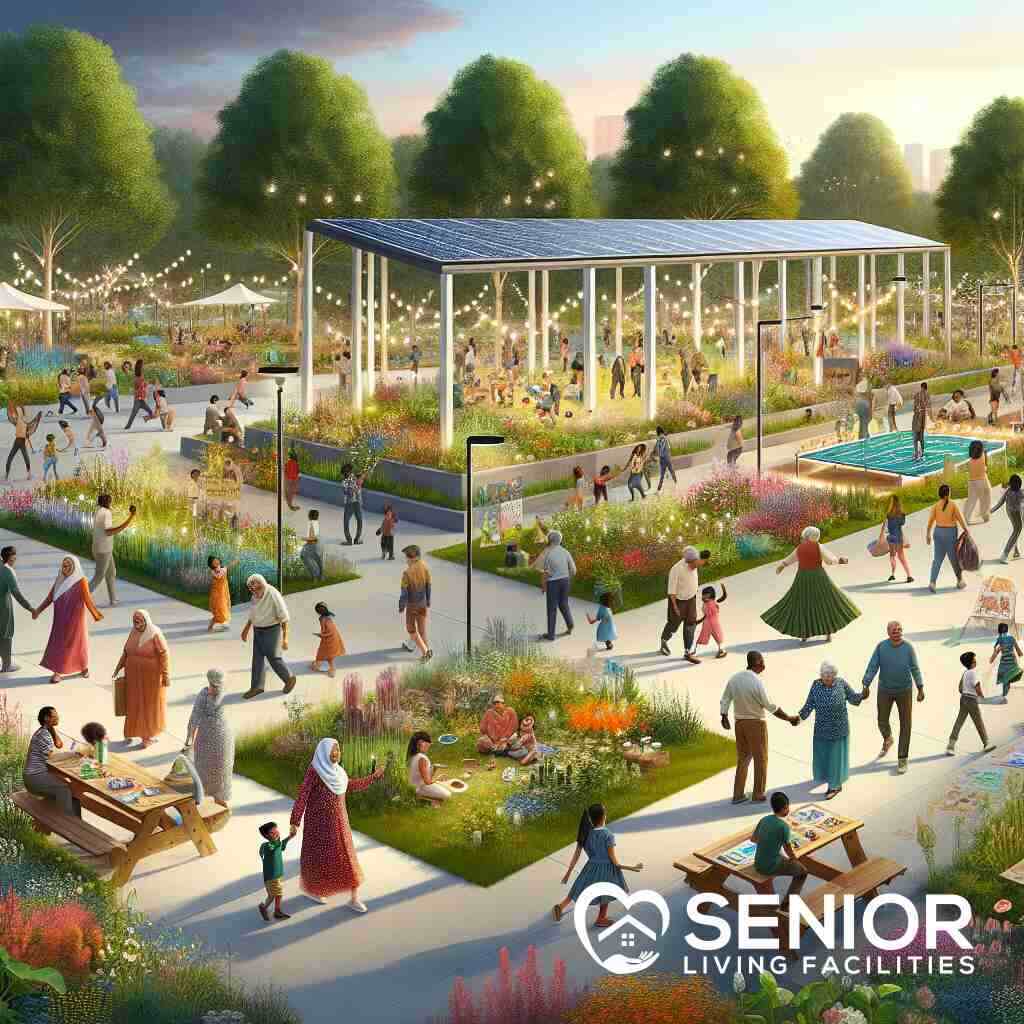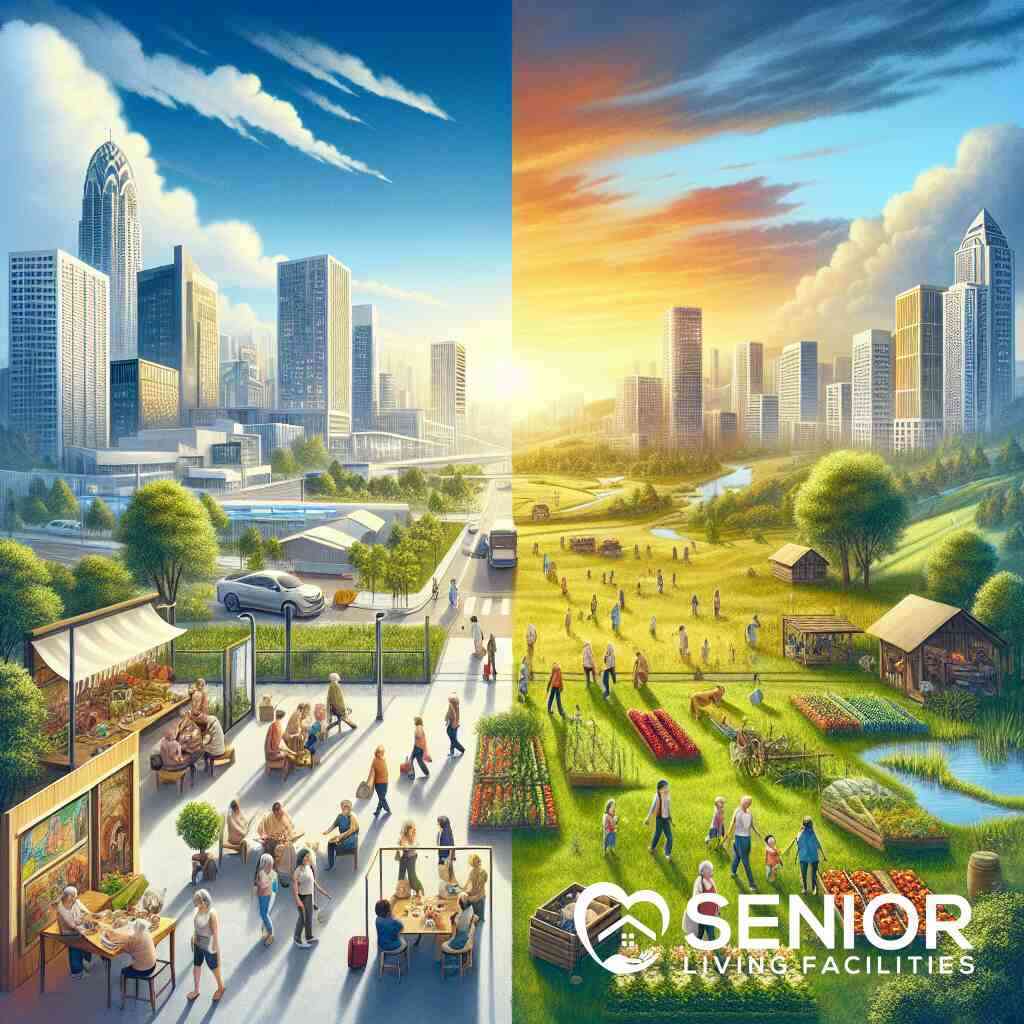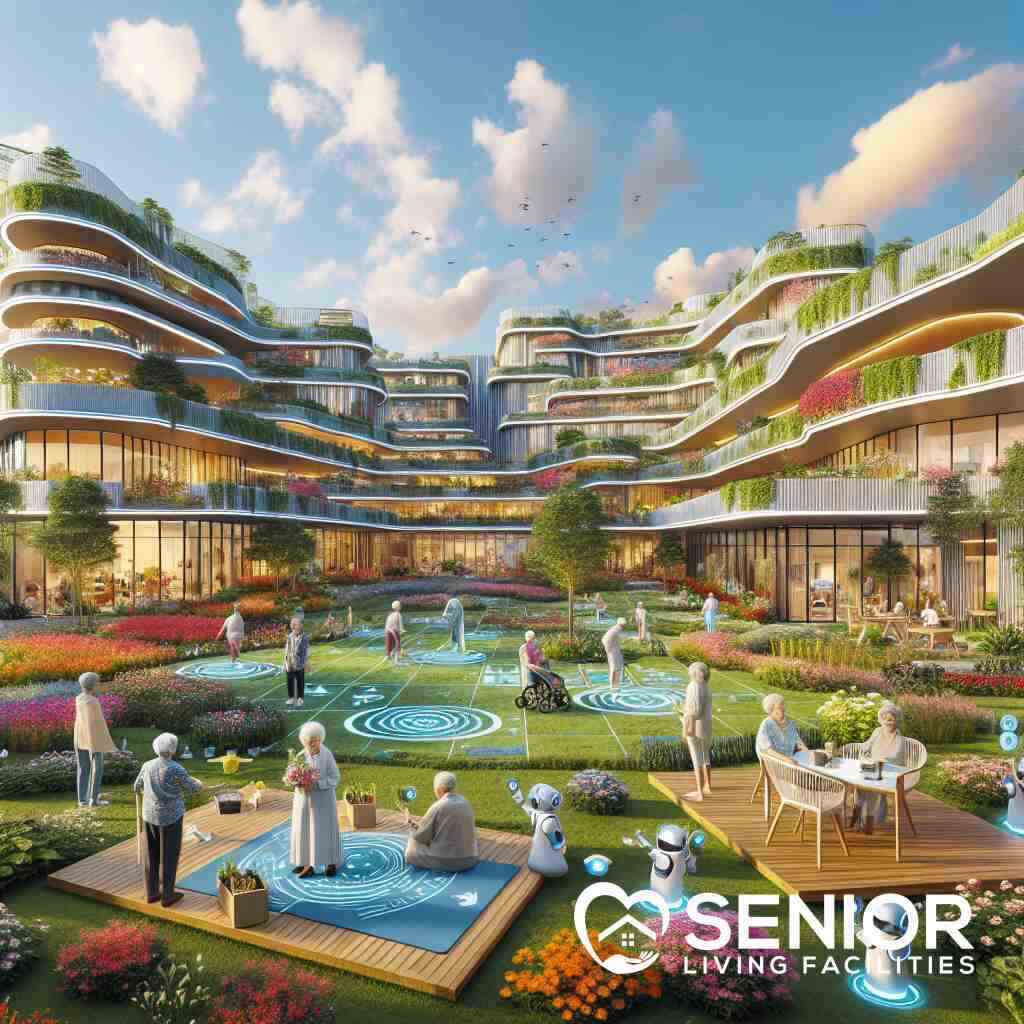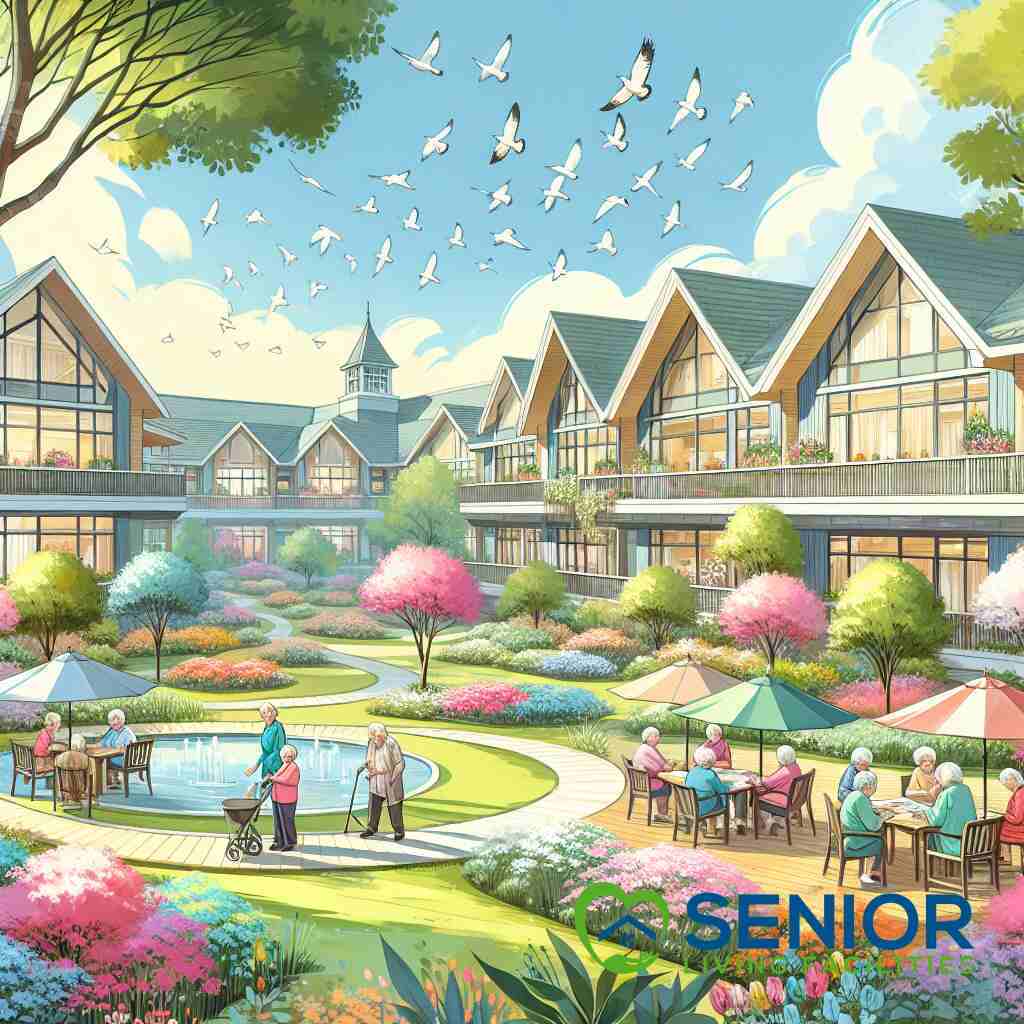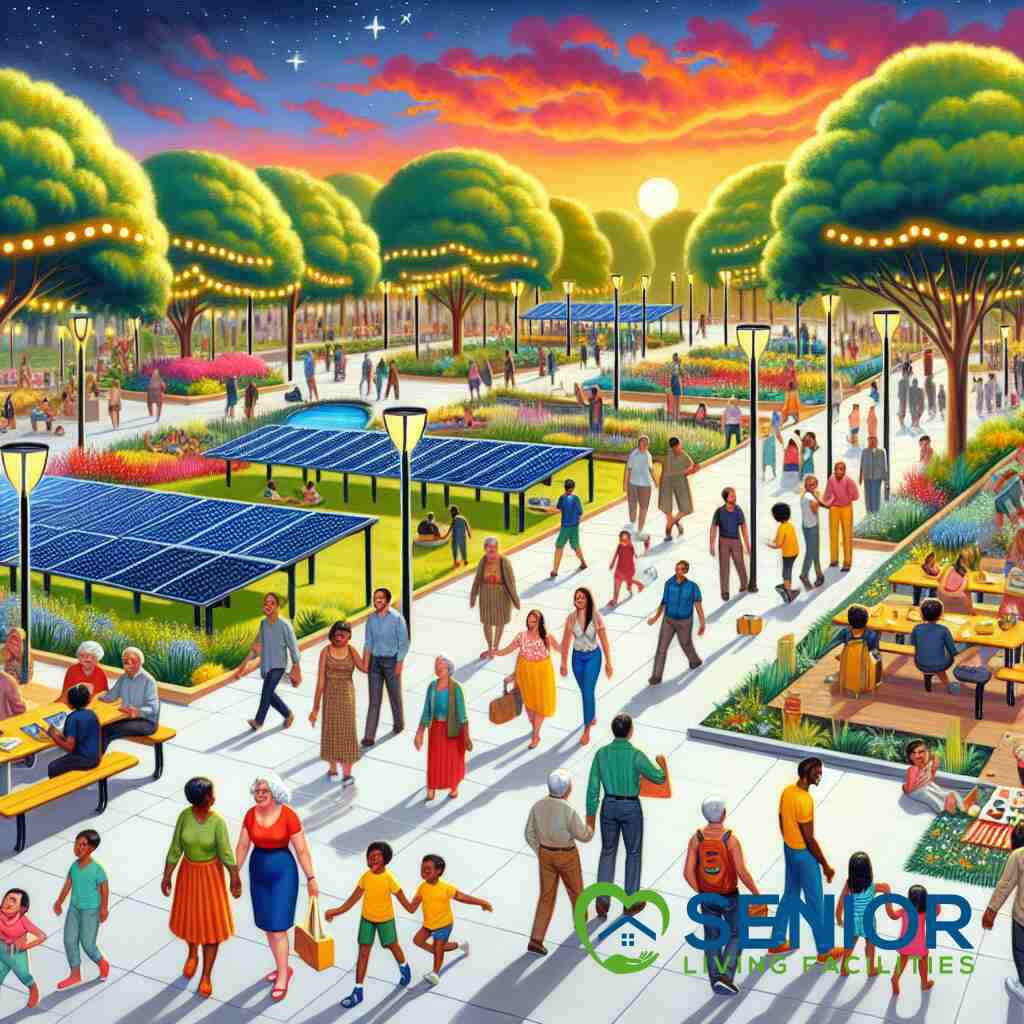
Guide to Uncovering Best Practices in Senior Housing 2024
October 23, 2024
Embarking on the Journey of Senior Housing
Evolving Landscapes of Senior Housing
The landscape of senior housing continuously evolves, shaped by demographic changes and emerging care paradigms. Understanding these shifts is crucial for developing optimal senior care solutions. Communities for seniors 55+ now offer diverse options, ranging from independent living to comprehensive care facilities. Rental housing for seniors provides flexible living arrangements, accommodating the varied financial and personal needs of aging adults. As the elderly population increases, senior living facilities adapt to incorporate age-friendly community design and enhance seniors’ living experiences.
Government policies and societal expectations significantly affect the evolution of senior living options. The integration of technology into eldercare development is inevitable, facilitating more innovative senior living strategies. The convergence of healthcare, hospitality, and technology leads to more personalized and efficient services. These changes are not just modifications but rather opportunities to set new senior housing quality standards, providing a more enriched and satisfying life for the elderly population.
Understanding Key Senior Housing Trends
Key trends in senior housing emerge out of necessity for tailored care and community engagement. Personalization has ascended to the forefront, with facilities embracing personalized care plans for seniors to offer specific, patient-centric assistance. Tailored care strategies reflect the need for individualized approaches, improving the quality of life for residents. Consequently, understanding these trends helps stakeholders design environments that are both adaptable and inviting, addressing the complexities of senior living.
Moreover, there is a growing focus on technological innovations in senior housing. Smart home innovations and digital tools are rapidly becoming essential components, offering seniors enhanced safety, comfort, and connectivity. By embracing smart technology in eldercare Smart Technology in Eldercare, facilities can ensure residents’ well-being while facilitating seamless interaction among residents and their families.
Innovations Shaping the Future
Innovations in senior housing are pioneering new pathways toward excellence in senior care and community living. These include the development of sustainable practices in senior living, where environmental considerations align with senior housing needs. For example, exploring renewable resources and energy-efficient solutions can reduce operational costs and contribute to a greener planet, aligning the industry with broader global sustainability goals.
Interactive technologies create more engaging living environments, enhancing senior life enrichment programs. These tools, combined with innovative solutions in senior care, support the development of skill-building activities and social engagement among seniors. This trend underscores the synergy between wellness-focused senior communities and technology, showcasing a prospective outlook for resolving existing challenges in senior care and enriching senior experiences.
Unlocking the Potential of Age-Friendly Community Design
Creating Inclusive Environments for Seniors
Creating inclusive environments for seniors is central to enhancing their quality of life. The concept of age-friendly community design emphasizes spaces that encourage participation, safety, and wellness for older adults. Designing communities with adaptable housing options, public spaces, and social activities fosters a sense of belonging and independence among seniors. By promoting accessibility and social interactions, these communities help seniors maintain an active and engaged lifestyle, alleviating feelings of isolation.
Inclusive environments often feature accessible amenities and services tailored to elderly needs. Facilities that integrate social spaces, exercise areas, and communal dining spaces encourage interactions and build a community atmosphere. Furthermore, promoting diversity within senior living communities ensures residents feel accepted and valued, spurring a thriving environment. The emphasis on inclusivity in senior housing is a transformative aspect of modern senior living facilities, consistently striving to set new standards for quality care and community engagement.
Integrating Technology and Smart Design
Integrating technology into senior housing is a powerful strategy to enhance residents’ lives. Smart home technologies in senior living environments create safer, more connected living areas. Systems like automated lighting, temperature controls, and emergency response systems streamline daily tasks, offering peace of mind to both residents and their families. Technology integration in senior housing ensures senior living facilities evolve with the current digital age, meeting contemporary expectations.
These innovations further extend to health monitoring devices and virtual reality tools for cognitive support. They support wellness and cognitive health, expanding the horizons for care delivery in eldercare facilities. Leveraging data from smart devices, caregivers can offer more personalized health management, facilitating timely interventions and supporting autonomy among senior residents. The adaptability and utility that smart technologies offer are reshaping how communities support aging adults, signifying a leap toward a more efficient eldercare system.
Addressing Mobility and Accessibility
Addressing mobility and accessibility is vital in designing senior-friendly environments. Senior housing communities aim to remove barriers to ensure older adults can navigate their surroundings with ease. Features such as wheelchair-accessible pathways, elevator access, and enhanced transport options are fundamental in aiding mobility. Age-friendly community design focuses significantly on such accessibility improvements, enabling greater freedom and self-reliance for seniors.
Implementing designs that accommodate all facets of mobility, like ergonomic furniture and easy-to-reach storage, is crucial. These enhancements boost seniors’ autonomy and empower them to engage with the community actively. Furthermore, training staff in accessibility needs ensures constant support for mobility-challenged residents. The seamless integration of these elements within senior housing structures cultivates environments where seniors can thrive independently and with dignity, setting an industry benchmark for eldercare excellence.
Navigating Personalized Senior Care Plans
Crafting Tailored Care Strategies
Embracing personalized care plans for seniors is pivotal in addressing individual needs. Each resident benefits from a plan that considers medical history, lifestyle, and personal preferences. These strategies should prioritize emotional and physical well-being by adapting to ever-changing health requirements. As individuals age, tailored care solutions must evolve to remain relevant, ensuring the highest quality of life possible. By focusing on personalized approaches, senior living facilities can provide support that reflects residents’ unique circumstances, establishing a more comfortable and familiar environment.
Facilities must collaborate closely with healthcare providers and families to develop these plans. Effective communication fosters an understanding of each senior’s specific needs, leading to more precise care delivery. This partnership ensures care plans are not stagnant but adaptive and comprehensive, addressing changes promptly. This dynamic approach reflects the industry’s commitment to offering senior housing quality standards that prioritize empathy and precision.
Balancing Independence and Assistance
Safeguarding seniors’ independence while offering necessary assistance requires careful balance. The objective is to empower residents to lead self-sufficient lives, knowing help is readily available when needed. Facilities should focus on creating adaptable senior environments where both autonomy and security are enhanced. These environments often feature supportive services such as meal preparations and home maintenance while encouraging personal choice in day-to-day activities.
Assistance should integrate seamlessly into daily life, enabling seniors to maintain their dignity and freedom. Customizable living arrangements and flexible care options are essential in achieving this balance, allowing residents to choose the level of support they receive. This approach respects individual capabilities, fostering an environment where seniors thrive without feeling restricted. Encouraging self-reliance is a hallmark of innovative senior living strategies that redefine the boundaries of traditional care facilities.
Evaluating Elderly Care Innovations
Continuously evaluating senior care innovations is crucial in enhancing care quality. Technological advancements and care methodologies must be scrutinized for efficacy and resident satisfaction. By staying current with innovations, facilities can integrate cutting-edge solutions that address diverse senior needs. Innovations such as telemedicine and remote health monitoring exemplify advancements in providing real-time care assistance, ensuring timely medical interventions.
Elderly care innovations also include pioneering wellness initiatives that prioritize mental, physical, and emotional health through holistic approaches to senior wellness. Fitness programs and mental stimulation activities support comprehensive well-being, aligning with broader wellness trends in senior care. Evaluation processes should encompass these elements to ensure facilities remain at the forefront of eldercare services. This commitment to progress and continual improvement underpins the success of senior living facilities, offering seniors an unmatched living experience that meets modern expectations.
Harnessing Technology for Enhanced Senior Living
Smart Home Technologies Transforming Daily Life
Embracing smart home technology in senior living can profoundly transform daily routines, promoting greater independence and safety for seniors. Devices like automated lighting, climate regulation systems, and voice-activated assistants simplify everyday tasks, delivering newfound convenience and peace of mind. Security systems integrated with monitoring features provide essential assurance, allowing for real-time alerts and responses, which is crucial in emergencies. These innovations align with contemporary expectations, asserting a seamless blend of tradition and technology in senior living areas. The implementation of these advanced solutions makes aging in place not only feasible but also enjoyable and secure, ensuring that seniors can live comfortably in their preferred environment.
Smart technology advancements enable seniors to maintain their autonomy while staying connected to their communities. For instance, self-maintenance of living spaces becomes less burdensome with automation, as smart homes manage many routine functions independently. The inclusion of comprehensive remote control capabilities allows seniors to adjust their environment effortlessly. As more facilities embrace these technologies, they set new benchmarks in eldercare, illustrating a proactive attitude towards incorporating technology in enhancing living conditions for seniors.
Digital Tools for Reducing Senior Isolation
By harnessing digital tools, senior living facilities can play a pivotal role in reducing senior isolation with technology. Video calling apps and social media platforms encourage ongoing communication with loved ones, minimizing feelings of loneliness. Virtual classes and social events provide opportunities for engagement and learning, fostering a sense of community and purpose within senior residences. The digital sphere connects residents with the world beyond their immediate environment, rekindling old relationships and sparking new interests.
Moreover, digital health platforms facilitate monitoring and managing health conditions, contributing to residents’ overall well-being. Ultimate Guide to Tech-Savvy Senior Living in 2024 These tools offer accessible telemedicine options, ensuring timely medical consultations and continuity of care. The symbiosis between digital solutions and senior living not only combats isolation but also enhances the quality of life for residents. This approach resonates with broader eldercare trends, ensuring that facilities remain aligned with modern innovations and senior needs.
Exemplifying Success with Interactive Technology
Interactive technology has become a pivotal element in illustrating the success and advancement of senior living environments. Technologies such as virtual reality (VR) and cognitive training applications provide engaging and stimulating experiences, enriching seniors’ cognitive abilities and entertainment options. VR, for instance, offers immersive experiences like travel simulations or historical tours, fostering cognitive engagement and providing a sense of adventure. Such tools are instrumental in senior life enrichment programs, continually redefining what senior living can offer.
By integrating these technologies, facilities not only enhance the day-to-day activities of residents but also empower them to pursue lifelong learning and exploration. The successful incorporation of these advanced technologies sets a precedent for how senior communities can offer interactive and meaningful experiences. These successes motivate more facilities to adopt similar state-of-the-art solutions, setting a dynamic and progressive course in senior housing development. With continual advancements, the potential for interactive technology in senior care is boundless, driving the industry toward an innovative future.
Promoting Wellness-Focused Senior Communities
Implementing Holistic Senior Care Approaches
Holistic approaches to senior wellness encompass a comprehensive view of physical, mental, and emotional well-being. Facilities adopting these methods understand the importance of personalized care plans for seniors. These approaches bring together various therapies, social activities, and individualized care plans to address all facets of a senior’s life. The integration of these therapies into daily routines fosters an environment where seniors can thrive in a supportive and enriching atmosphere. Working closely with healthcare professionals ensures that senior living facilities provide care that aligns with best practices in eldercare while focusing on the resident’s overall wellness.
By maintaining open communication with both seniors and their families, facilities can craft care plans that cater to specific needs. Residents are encouraged to express their preferences, ensuring that every aspect of their care plan reflects their lifestyle and values. This level of customization is pivotal in ensuring satisfaction and enhancing life quality. Implementing such holistic care strategies demonstrates a commitment to evolving best practices, allowing communities to offer unmatched support for their residents. With these approaches, seniors experience a vibrant and fulfilling life characterized by wellness and a strong sense of belonging.
Encouraging Active Lifestyles and Engagement
Active lifestyles and social engagement are vital to a senior’s health and happiness. A well-rounded wellness program encourages seniors to participate in various activities, boosting their physical and cognitive health. Engaging programs, ranging from fitness classes to art workshops, play a crucial role in senior life enrichment programs. These activities nourish interests and hobbies while promoting social interaction within the community. By prioritizing engagement, facilities create a lively atmosphere that fosters friendship and community spirit among residents.
Communities focusing on active lifestyles also offer tailored fitness programs. These initiatives cater to different capability levels, ensuring that all seniors can partake in physical activity safely and confidently. Regular exercise and purposeful engagement support a sense of achievement and empowerment, mitigating feelings of loneliness or isolation. Facilities that emphasize active living set themselves apart by providing exceptional opportunities for growth and interaction. The Importance of Social Activities in Senior Living Through these endeavors, seniors enjoy an enriching lifestyle that bolsters their well-being and happiness.
Prioritizing Nutrition and Health Services
Nutrition is another cornerstone of a wellness-focused community. Senior living facilities prioritize offering nutritious meals designed to meet residents’ dietary needs and preferences. Customized meal plans cater to individual health conditions, ensuring adequate nutrition and dietary satisfaction. Involving residents in menu planning or providing options based on feedback guarantees dietary services remain responsive and engaging. Effective nutrition services also include educational workshops on healthy eating and supporting seniors in making informed dietary choices.
Health services within these communities take a proactive approach, emphasizing preventive care alongside treatment. Regular health assessments and wellness check-ups are vital components, ensuring timely intervention when necessary. This health-focused approach instills confidence in residents and family members, knowing that care is comprehensive and attentive. By maintaining high standards in nutrition and health services, senior living facilities enhance the quality of life for their residents, reinforcing their commitment to wellness-centered care. Such dedication not only meets the current needs of seniors but also anticipates future requirements in the ever-evolving landscape of senior care.
Pioneering Sustainable Senior Living Practices
Integrating Environmental Sustainability into Senior Housing
Integrating environmental sustainability in senior homes is increasingly recognized as a fundamental aspect of modern senior housing development. This transformation requires a holistic approach to construction and design, emphasizing eco-friendly materials and energy-efficient technologies. Incorporating sustainable practices not only reduces environmental impact but also aligns with the ethos of creating healthier living spaces for seniors. An example is the utilization of solar panels and advanced insulation techniques, which significantly decrease energy consumption. Furthermore, water conservation systems and waste reduction programs complement these efforts, offering a blueprint for sustainable senior living communities. By prioritizing sustainability, senior housing facilities can protect natural resources while providing enhanced quality of life for their residents.
Exploring Green Initiatives and Renewable Resources
Green initiatives and renewable resources represent critical components of fostering sustainable senior living environments. Facilities that champion sustainable practices in senior living often explore innovative methods to reduce energy and resource use. Renewable energy sources, such as solar, wind, and geothermal, are increasingly integrated into senior housing infrastructure, offering clean and sustainable power solutions. Pioneering Sustainable Senior Living Practices By implementing environmentally responsible practices, facilities contribute to broader sustainability goals and reduce operational costs. Additionally, initiatives such as rooftop gardens and community green spaces enhance residents’ connection to the environment, promoting wellness and ecological awareness. These green strategies not only emphasize environmental stewardship but also enrich the living experiences of senior communities. Such proactive approaches ensure senior housing remains at the cutting edge of sustainability, setting industry standards for future developments.
Innovative Solutions for a Sustainable Future
The search for innovative solutions in senior care continuously drives the evolution of sustainable senior housing. Forward-thinking facilities employ cutting-edge technologies that perfectly blend sustainability with senior care needs. Smart building systems that optimize energy use and maintain optimal indoor environments illustrate this synergy. Moreover, innovative water reuse systems and sustainable landscaping offer practical ways to minimize resource use while enhancing the facility’s eco-credentials. By fostering collaborations with environmental experts and leveraging state-of-the-art technologies, senior housing developments can lead the way in creating a sustainable future. These innovations reflect a pioneering spirit within the industry, showcasing the potential to reshape senior living practices positively. Through such efforts, senior housing not only meets current expectations but anticipates the needs of future generations, contributing to a resilient and sustainable eldercare landscape.
Fostering Intergenerational and Community Engagement
Building Bridges Across Generations
Building connections across generations enhances the vitality and resilience of senior living communities. By integrating intergenerational activities, senior living facilities cultivate environments where the young and the elderly can exchange knowledge and experiences. These programs encourage mutual respect and foster a sense of belonging, forging bonds that extend beyond traditional boundaries. Activities such as storytelling sessions, art collaborations, and community service projects offer seniors a platform to share their wisdom, while younger participants benefit from first-hand life lessons. This interconnectedness not only enriches the lives of residents but also strengthens community ties, illustrating a model of inclusive senior housing that values diversity and collaboration.
Family and community engagement initiatives are pivotal in nurturing these intergenerational relationships. Facilities often invite schools and local organizations to participate in events, fostering a dynamic environment for cultural exchange. Seniors gain a renewed sense of purpose through active participation, contributing their skills and experiences to communal pursuits. An open-door policy for community members encourages continuous involvement and support, aligning with a vision of accessible and vibrant senior living options. These endeavors exemplify enhancing senior community engagement and highlight the profound benefits of cross-generational interaction.
Developing Community Engagement Programs
Developing robust community engagement programs is crucial in creating thriving senior living environments. Innovative solutions in senior care emphasize the necessity of strong community networks where seniors feel valued and connected. These programs address social needs by offering meaningful activities and services that resonate with residents’ interests and enhance their quality of life. Tailored initiatives such as wellness classes, educational seminars, and recreational outings create varied opportunities for participation, ensuring that all residents feel included and stimulated.
The success of community engagement programs relies on understanding residents’ preferences and fostering a culture of inclusion. Facilities often incorporate feedback mechanisms, such as resident councils or suggestion boxes, to ensure programs align with the community’s desires. By continuously evolving and adapting activities, facilities can maintain high levels of engagement and satisfaction among residents. This approach not only mitigates feelings of isolation but also fosters a sense of community spirit, reinforcing the facility’s role as a hub for social well-being and empowerment.
Addressing the Benefits of Intergenerational Living
Exploring intergenerational living options offers numerous benefits, enriching both seniors and younger generations. These living arrangements redefine the concept of traditional senior housing by incorporating diverse age groups into a single environment. The benefits of such arrangements extend to enhanced social interaction, reduced loneliness, and opportunities for cultural exchange. By fostering an atmosphere of mutual learning, both young and elderly residents benefit from a broad spectrum of perspectives and skills.
Intergenerational living options also promote financial and social stability. Shared resources and collaborative spending create cost-effective solutions for housing, making it accessible for different age groups. This model encourages sustainable living practices and strengthens community resilience, contributing to a supportive and nurturing environment. Facilities that adopt such models demonstrate innovative thinking in senior housing development, setting a precedent for inclusive and equitable senior living solutions. By addressing these benefits, senior communities can implement aging-in-place solutions that enhance the quality of life for all residents.
Conclusion: Pathway to Excellence in Senior Housing
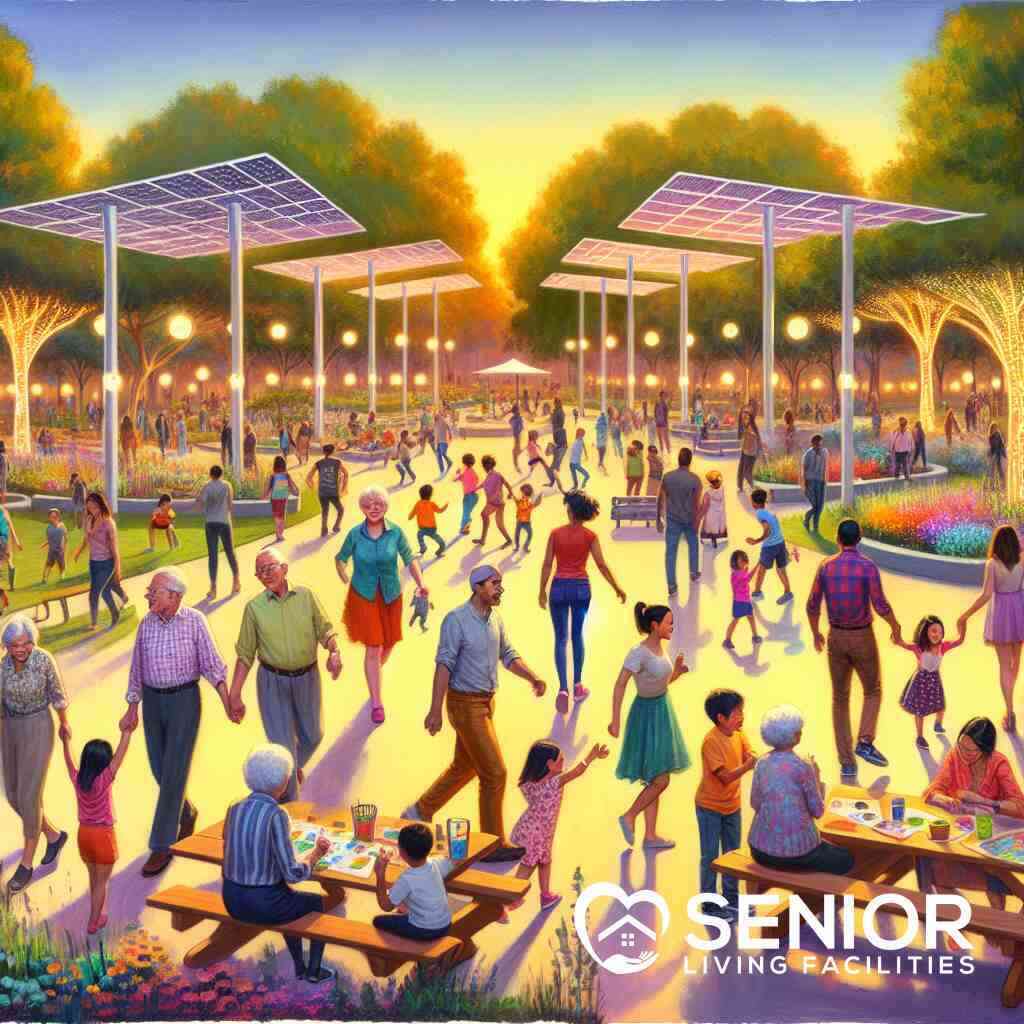
Implementing Best Practices for Optimal Outcomes
Implementing best practices in senior housing requires a proactive approach that prioritizes quality and innovation. It starts with integrating personalized senior care plans that emphasize individualized attention and adaptability. Facilities must continuously evaluate senior care innovations to incorporate cutting-edge services that enhance residents’ well-being. Additionally, fostering adaptive senior environments is critical to cater to varying mobility and accessibility needs, ensuring inclusivity and autonomy for residents. By advocating for these best practices, senior living communities will set industry standards, cultivating environments that truly embrace excellence and forward-thinking strategies.
Reflecting on the Future of Senior Living
Reflecting on the future of senior living involves anticipating trends and addressing emerging challenges with innovative solutions in senior care. The integration of innovative senior living strategies allows facilities to stay competitive and relevant in an ever-evolving landscape. Embracing advancements such as smart technologies and sustainable practices aligns senior housing with modern expectations while ensuring environmental and economic viability. As new paradigms emerge, senior living facilities must remain agile, adapting swiftly to the changing needs of their residents. This mindset not only ensures quality but also fosters resilience and continuity in providing outstanding eldercare.
Empowering Communities and Families
Empowering communities and families is at the heart of advancing senior living practices. By creating spaces that promote enhancing senior community engagement, facilities strengthen familial bonds and community ties. Intergenerational programs and initiatives encourage collaboration among different age groups, enriching the social fabric of senior communities. This collaboration cultivates mutual respect and learning, essential components for thriving, compassionate communities. Furthermore, empowering families through transparent communication and involvement in care decisions bolsters trust and satisfaction. These elements are fundamental to achieving a supportive and enriching atmosphere that deeply respects and values the contributions of all community members. Through such empowerment, senior living not only meets but exceeds the expectations of today’s older adults and their families.
Frequently Asked Questions
Question: What innovative senior living strategies does Senior Living Facilities recommend for 2024?
Answer: Senior Living Facilities emphasize the integration of innovative senior living strategies that align with the evolving landscape of senior care. Our recommendations for 2024 include the adoption of smart home technology for seniors to enhance safety and comfort while promoting independence. We also advocate for personalized senior care plans, which focus on tailored solutions that meet the unique needs of each resident. By incorporating technology in senior housing, such as automated lighting and climate control, we ensure a seamless living experience for seniors. Moreover, we promote age-friendly community design to encourage social engagement and accessibility within senior living environments. Our commitment is to provide optimal senior care solutions that adapt to contemporary advancements and enhance the quality of life for all residents.
Question: How does the Guide to Uncovering Best Practices in Senior Housing 2024 suggest addressing senior isolation?
Answer: The Guide to Uncovering Best Practices in Senior Housing 2024 highlights several strategies to combat senior isolation. At Senior Living Facilities, we believe in harnessing digital tools to facilitate communication and connectivity among seniors. Our platform emphasizes the importance of interactive technology, such as video calling apps and social media, as effective means to reduce feelings of loneliness. Additionally, we advocate for senior life enrichment programs that incorporate various social and recreational activities. By fostering a sense of community, seniors are encouraged to participate in group events, virtual classes, and other opportunities for engagement, ultimately enhancing their well-being and social interaction. These efforts reflect our dedication to promoting wellness-focused senior communities where seniors feel valued and connected.
Question: In what ways do Senior Living Facilities support sustainable senior living practices?
Answer: At Senior Living Facilities, we are committed to supporting sustainable senior living practices that align with modern environmental standards. Our approach includes integrating innovative solutions in senior care that reduce resource consumption while enhancing living conditions for seniors. We encourage the use of renewable resources, such as solar panels and energy-efficient building materials, to minimize environmental impact. Additionally, we support green initiatives like community gardens and water conservation systems, which contribute to a healthier environment and promote wellness among residents. Our dedication to environmental sustainability ensures that senior housing quality standards are met, creating eco-friendly communities that offer sustainable and enjoyable living experiences for all residents.
Question: What role does intergenerational living play in Senior Living Facilities’ senior housing options?
Answer: Intergenerational living options play a significant role in Senior Living Facilities’ approach to senior housing. We recognize the benefits of fostering connections across different age groups, which include enhanced social engagement, cultural exchange, and reduced isolation for seniors. Our facilities incorporate intergenerational activities that encourage interaction between seniors and younger generations, such as storytelling sessions and community service projects. These initiatives create a vibrant community atmosphere where residents can share their experiences and learn from one another. By embracing intergenerational living, we empower seniors to feel a renewed sense of purpose and belonging, making our communities more inclusive and dynamic.
Question: Can Senior Living Facilities help implement holistic senior care approaches?
Answer: Absolutely! Senior Living Facilities champions holistic senior care approaches that consider the comprehensive well-being of each resident. We work closely with healthcare professionals to integrate personalized senior care plans that address the physical, mental, and emotional health of seniors. Our facilities offer a variety of therapies, social activities, and wellness programs tailored to individual needs, ensuring a supportive and enriching environment. By maintaining open communication with residents and their families, we ensure that care plans are dynamic and aligned with the best practices in senior housing. Our commitment to holistic care demonstrates our dedication to enhancing the living experience for seniors, making us a trusted choice for eldercare solutions.
